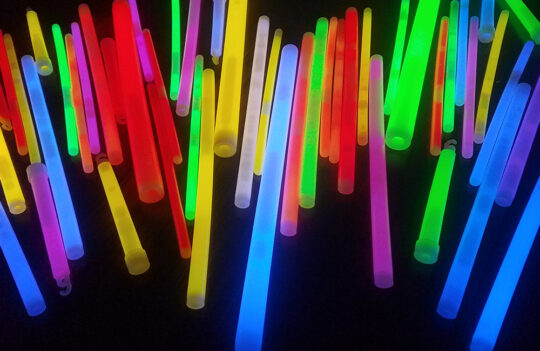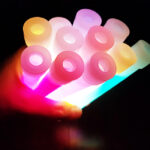1. The Chemistry of Glow Sticks and Shedding Light on the Scientific Phenomenon of Glow
Glow sticks have become synonymous with celebrations, night-time events, and even emergency situations. These captivating light sources offer a mesmerizing glow that can last for hours, but have you ever wondered about the science behind their luminosity? From dance parties to safety measures during power outages, glow sticks have found their way into numerous applications, thanks to the fascinating chemistry at play within them.
How do Glow Sticks Work?
At the heart of every glow stick is a chemical reaction known as chemiluminescence. This process involves the emission of light as a result of a chemical reaction, rather than from heat or electrical energy. The key components within a glow stick are:
- Dye Molecules: These molecules provide the vibrant colors we associate with glow sticks. They are typically fluorescent dyes that absorb energy from the reaction and emit it as light.
- Peroxide: Most glow sticks contain hydrogen peroxide, which acts as an oxidizing agent in the reaction. It kickstarts the chemical process that leads to the glow.
- Diphenyl Oxalate (DPO): DPO serves as the activator in glow sticks. It reacts with the hydrogen peroxide, initiating the chemiluminescent reaction.
The Chemical Reaction
The chemical reaction within a glow stick can be summarized as follows:
- The hydrogen peroxide oxidizes the diphenyl oxalate, producing phenol and peroxyacid ester as intermediate compounds.
- The peroxyacid ester then decomposes, releasing energy in the form of light. This energy excites the dye molecules, causing them to fluoresce and emit visible light.
- The phenol produced in the initial reaction further reacts with the dye molecules, enhancing the intensity and duration of the emitted light.
The Role of Temperature
Temperature plays a crucial role in the performance of glow sticks. Lower temperatures slow down the chemical reaction, resulting in a dimmer glow that lasts longer. Conversely, higher temperatures accelerate the reaction, leading to a brighter but shorter-lived glow. This phenomenon explains why glow sticks often appear brighter in warmer environments such as crowded dance floors.
Variations in Glow Stick Chemistry
While the basic chemistry of glow sticks remains consistent, manufacturers often tweak formulations to achieve specific characteristics. For instance, some glow sticks are designed to glow longer but with less intensity, making them suitable for marking paths during outdoor activities or as emergency lighting. Others prioritize brightness for use in entertainment venues or as decorative items.
Safety Considerations
Although glow sticks are generally considered safe, it’s essential to handle them properly. The chemicals inside glow sticks are not intended for ingestion, and contact with skin or eyes may cause irritation. Additionally, while the contents are non-toxic, they can stain clothing and surfaces.
Applications Beyond Entertainment
While glow sticks are synonymous with entertainment, their applications extend far beyond dance parties and festivals. They are commonly used in:
- Emergency Preparedness: Glow sticks provide a reliable source of light during power outages, natural disasters, or outdoor emergencies.
- Safety and Visibility: They are often used as markers for paths, hazards, or individuals during nighttime activities such as camping, hiking, or biking.
- Underwater Exploration: Glow sticks are employed by divers for underwater signaling and illumination due to their ability to produce light without the need for electricity.
Conclusion
The chemistry behind glow sticks unveils a captivating interplay of chemical reactions and energy transfer mechanisms. From their humble origins as entertainment novelties to their widespread use in safety and emergency situations, glow sticks continue to captivate and illuminate our lives. Whether you’re dancing the night away at a concert or navigating dark trails during a camping trip, the glow stick remains a reliable source of light, powered by the enchanting chemistry hidden within its slender tube.
2. Material Safety Data Sheet (Download MSDS Files)





